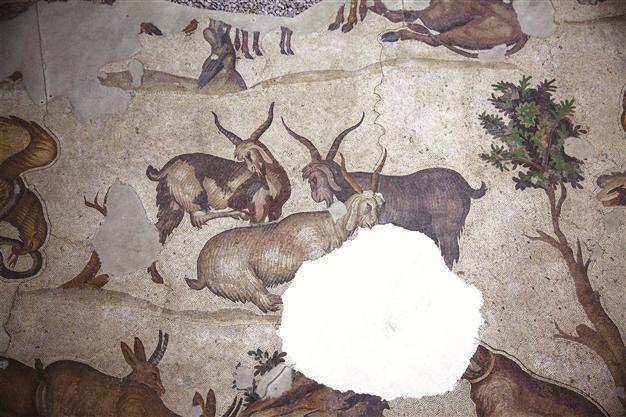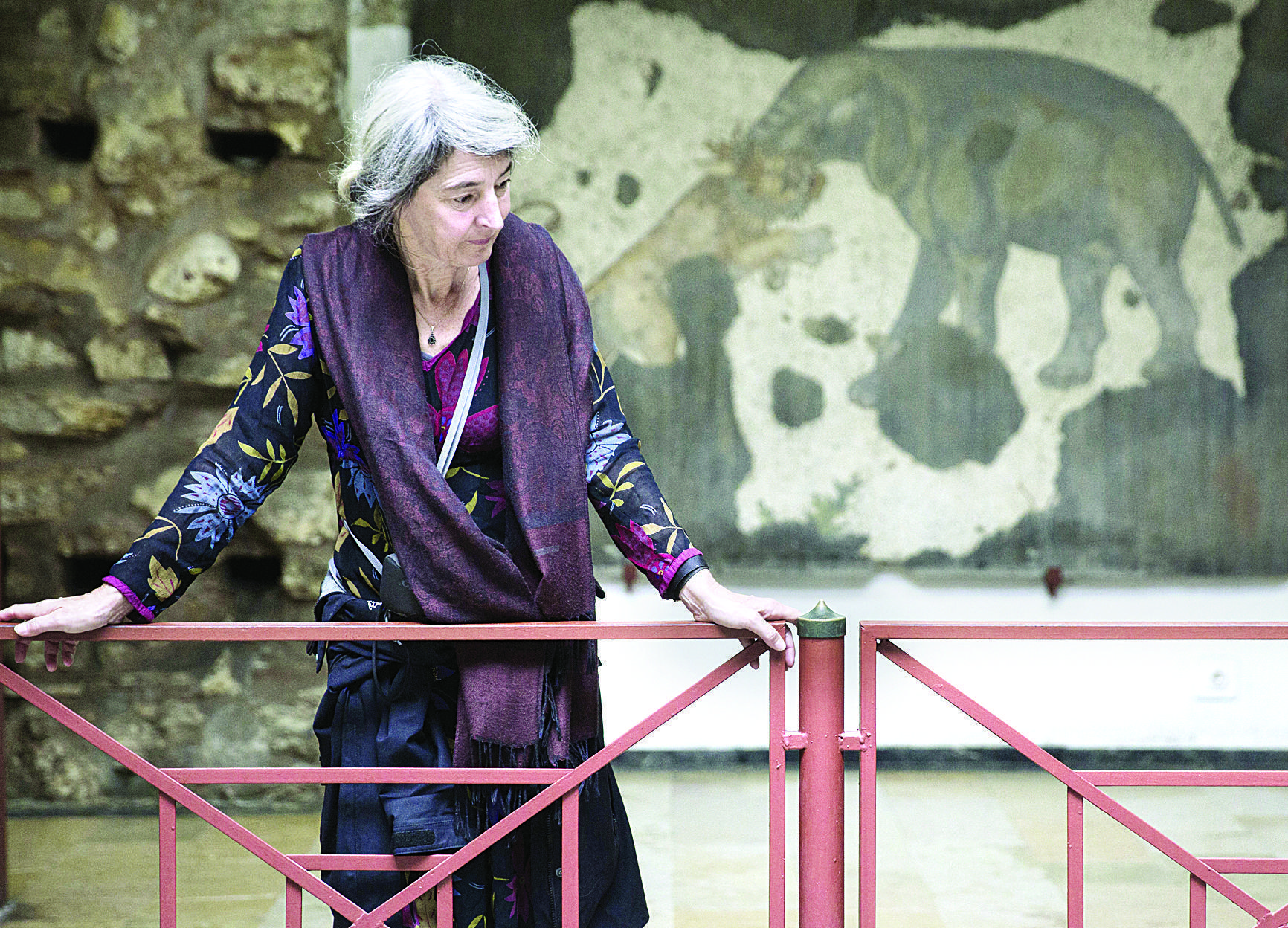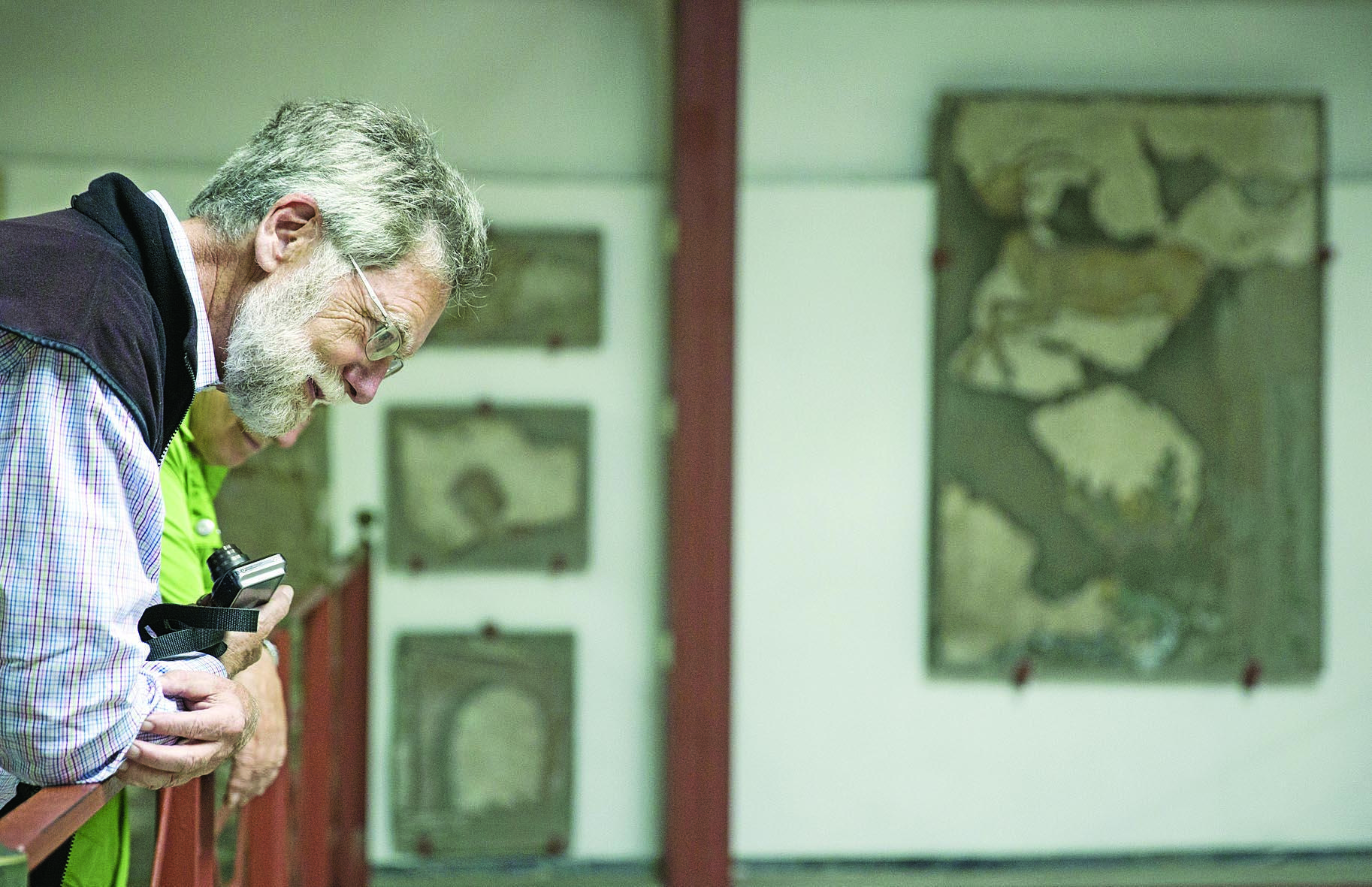Centuries-old mosaics to be restored
ISTANBUL - Anadolu Agency

Every year, nearly 100,000 tourists visit the Great Palace Mosaics Museum, which was opened in 1987. The mosaics in the museum will be cleaned and restored. AA photos
Eastern Roman mosaics dating back a millennium-and-a-half are set to get their first touch-up in almost three decades at the Istanbul Restoration and Conservation Laboratory to give them a more modern look.
“As part of a new project, there are plans for a new display at the [Great Palace Mosaic] Museum. As such, the mosaics should be restored again because the former restoration was carried out with the methods of the 1950s,” said Istanbul Restoration and Conservation Laboratory Director Ali Osman Avşar.
The mosaics were unearthed from the ground of the Great Palace in 1932.
Hayrullah Cengiz, director of the Hagia Sophia Museum, which is affiliated with the Great Palace Mosaics Museum, said the palace mosaics were the only artifacts that had been unearthed from the area and taken under protection.
“As the years have passed, we see that the museum building has become old. We have prepared a building survey and restoration project for the museum. It has been approved by the relevant institutes. When the project is finished, it will be a better museum than its current situation,” Cengiz said.
Every year, nearly 100,000 tourists visit the museum, which was opened in 1987, Cengiz said, noting that the facility would be closed to visits during the restoration process.
Avşar said the mosaics were unearthed during excavations in 1930s and moved to the museum for protection in the 1950s. Later on, in accordance with a protocol signed with the Austrian Sciences Academy, the mosaics were restored, Avşar added.
He said meticulous work was very important in the mosaic restoration. “One of the problems we will have here is that cement mortar was used in the restoration of the mosaics in the 1950s. Today, cement is a material that we don’t want to use because it contains soluble salts that damage tesserae. We will analyze the soluble salts to see if cement mortar damaged the tesserae or not. Then we will decide on the conservation method. But most probably, these salts have gone over the many years. Later on, we will work on aesthetic interventions.”
Mosaics to be documented
Avşar said they would also clean the mosaic panels and that the mosaic pieces would be examined one by one after cleaning work, with teams set to reinforce damaged pieces.
Avşar said another important stage of the project was documentation.
Noting that the purpose of conservation was to protect the artifacts, the laboratory director said: “Conservation neither changes an artifact’s historical identity nor its aesthetics. The museum is home to over 100 mosaic pieces. This is why the conservation work may take 1.5-2 years.”
Biggest landscape portraits that still survive
The mosaics, which date back to 450-550 A.D. and are on display at the Arasta Bazaar in the Sultanahmet Mosque complex, are very important in terms of the richness of their artistic scenes.
The mosaics, which were created by leading masters of the time for the ground of the Great Palace, were unearthed during excavations between 1932 and 1935. The mosaics depict daily life, nature and mythology.
The mosaics at the Great Palace Mosaics Museum have 90 different themes depicting 150 human and animal figures. On a field of 250 square meters, the mosaics are believed to be the biggest ones to survive since Late Antiquity.
The Great Palace Mosaics Museum opened in 1953 as a unit affiliated with the Istanbul Archaeology Museum. Since 1979, the museum has operated under the auspices of the Hagia Sophia Museum.
As part of a contract between the General Directorate of Monuments and Museums and the Austrian Sciences Academy, restoration and conservation works were also conducted on the mosaics in the 1980s.



